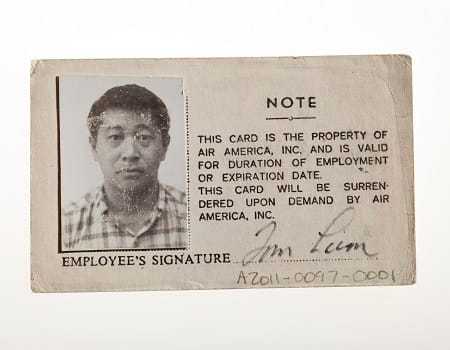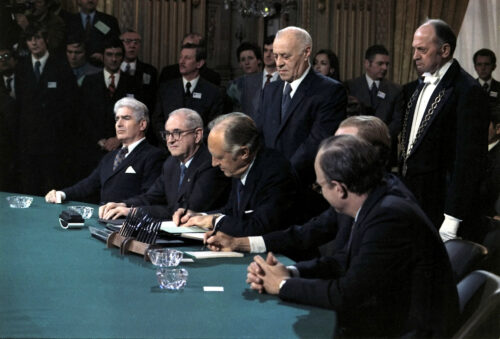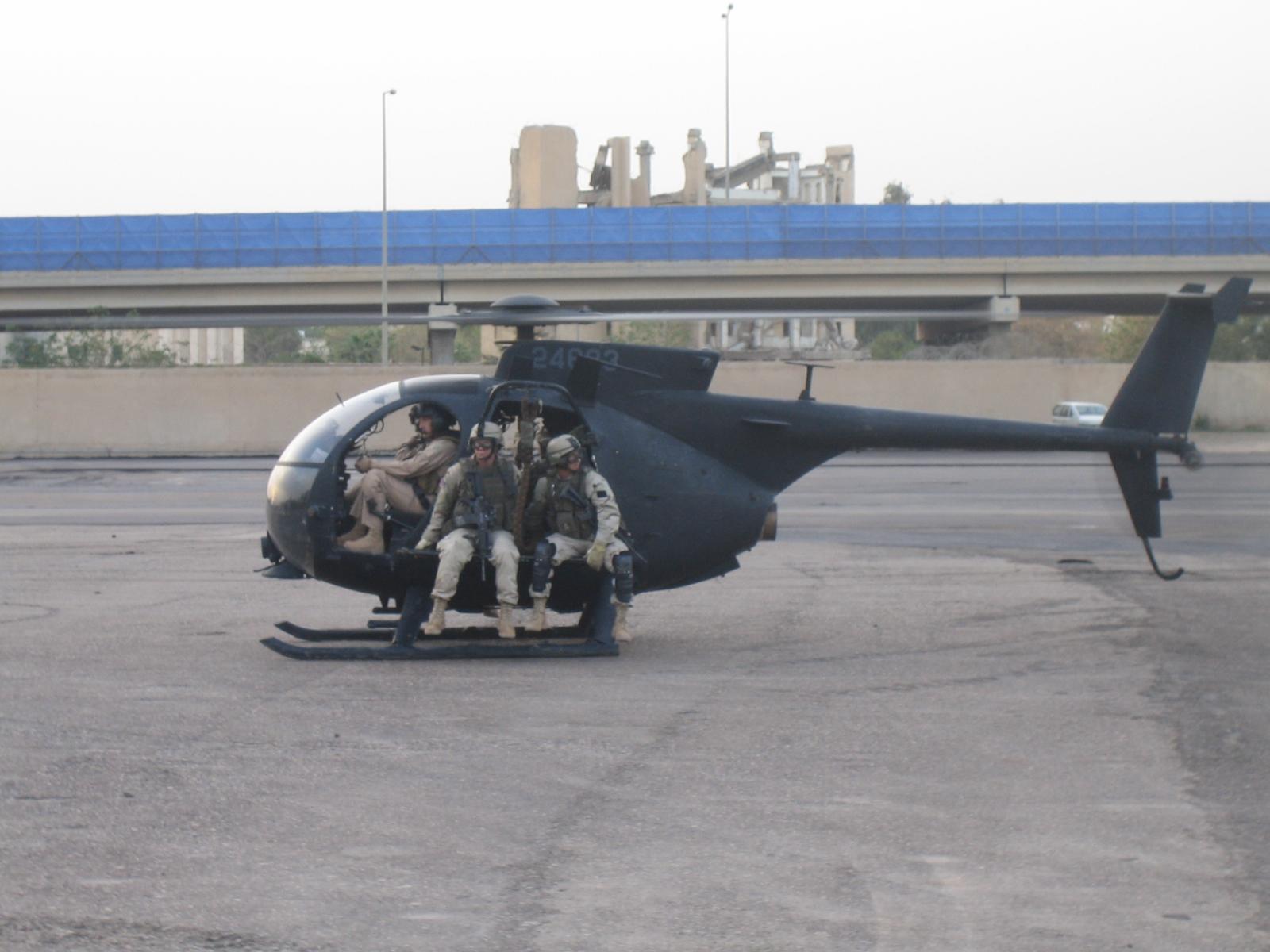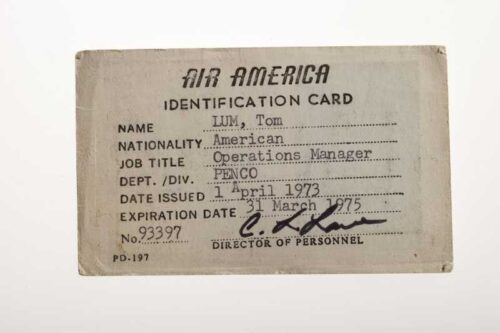A later model OH-6 Cayuse, modified with black paint, similar to the helicopters used in the operation. Photo: James Dale / CC BY 2.0 DEED.
The Vinh wiretap was an American espionage operation during the Second Indochina War, commonly known as the Vietnam War. From 7 December 1972 through early May 1973, Central Intelligence Agency (CIA) telephone intercepts of North Vietnamese military communications were supplied to American diplomat Henry Kissinger. As border phone lines were well watched, the decision was made to tap a military multiplex line in the Vietnamese heartland near Vinh.
During the Laotian Civil War portion of the Vietnam War, CIA spies in the Kingdom of Laos infiltrated the Ho Chi Minh Trail from the west to install wiretaps on Vietnamese communist telephone lines as early as 1966. The North Vietnamese clamped down on that effort with daily patrols checking for tampering along their phone lines on the Trail.
Mission
By 1971, with Vietnamization winding down American resources in the Vietnam War, the American need for intelligence was greater than ever. The CIA’s counter was to target a phone line deep within North Vietnam. Aerial photography disclosed a possible site for a tap 24 kilometers southwest of Vinh. A complex of military phone lines had been installed over a precipitous hill in a remote location; the communist patrols circled that hill without a close inspection of the lines on the summit.
The Vinh wiretap operation was fraught with numerous challenges. The operation’s location was a major hurdle. The decision to tap a military multiplex line near Vinh, deep within North Vietnam, meant crossing the heavily fortified Ho Chi Minh Trail and penetrating enemy territory, posing a significant risk to the operation.
Adding to the complexity was the vigilance of the North Vietnamese in protecting their communication lines. They conducted daily patrols along their phone lines on the Trail, making the operation even more perilous and difficult.
The training of the aircrew was another challenge. The CIA attempted to train Nationalist Chinese pilots for the operation, aiming to have an Asian aircrew for plausible deniability in case of capture. However, this presented its own set of unique challenges.
The operation’s stealth requirement was another significant challenge. The CIA modified two Hughes OH-6 Cayuses into what it dubbed the “The Quiet One”, also known as the Hughes 500P (the “P” standing for Penetrator). Numerous modifications, including a coat of black radar-absorbent paint, produced a stealth aircraft that is still regarded as the quietest helicopter ever. Its first public flight was on 8 April 1971.
On 28 April, Air America, a CIA proprietary airline, hired two experienced pilots to train aircrew for the black copter; a third was hired later. This aircraft, still regarded as the quietest helicopter ever, had to be developed and operated, which was a complex task.

Execution
The mission was executed by Daniel H. Smith and Lloyd George Anthony Lamonte Jr., Lao commandos, and the CIA. The CIA used a black helicopter to set a clandestine wiretap to eavesdrop on Paris Peace Talks discussions and other intelligence.
Technical difficulties also plagued the operation. In early May 1973, the Vinh wiretap went silent, with damage to the relay suspected. There were seven unsuccessful attempts to replace the relay between 8 May and 16 June 1973.
Despite these challenges, which highlight the complexity and risk involved in the Vinh wiretap operation, the operation was able to provide valuable intelligence to the U.S. during the Vietnam War.
Impact
The Vinh wiretap had a significant impact on the negotiations during the Vietnam War. From 7 December 1972, right through the Paris Peace Talk negotiations, and up until May 1973, the tap fed information back to the Americans. American diplomat Henry Kissinger, who was supplied with the CIA telephone intercepts of North Vietnamese military communications, deemed it as “excellent intelligence”, even though he “never questioned where it came from”.

This operation provided the U.S. with valuable insights into North Vietnamese military communications, which likely influenced their strategy during the negotiations. However, the specific details of how this intelligence was used in the negotiations are not publicly available. It’s important to note that intelligence gathering operations like the Vinh wiretap are typically classified, and the full extent of their impact may not be fully understood outside of the intelligence community.
Resources
Central Intelligence Agency
CIA.gov
Air America Association
Air-America.org
*The views and opinions expressed on this website are solely those of the original authors and contributors. These views and opinions do not necessarily represent those of Spotter Up Magazine, the administrative staff, and/or any/all contributors to this site.

